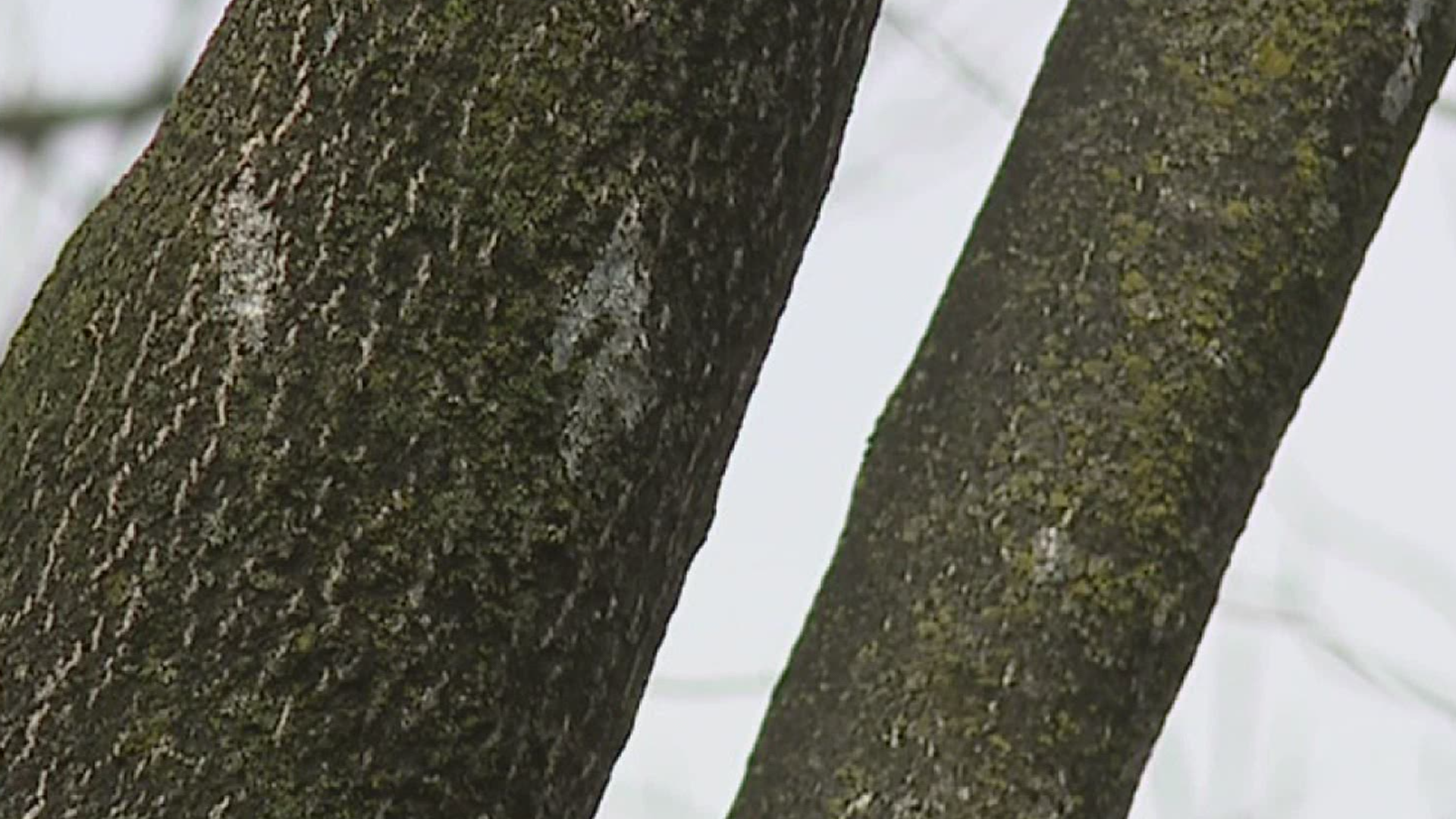LANCASTER COUNTY, Pa. — Spotted: Social media posts show spotted lanternfly (SLF) nymphs in Philadelphia and Bucks County.
"They started hatching in warmer areas in Philadelphia and southern Pennsylvania as early as April," explained Emelie Swackhamer, a horticultural educator for Penn State Extension.
In Southcentral Pennsylvania, it's only a matter of time.
"We expect to start seeing them any day. We had some cooling temperatures these past few days but it's going to get warm again, and it's going to kick those eggs into high gear, and they're going to hatch," said Swackhamer.
So how can you protect your trees and crops?
"There is a lot of different options to manage spotted lanternfly," said Swackhamer.
You could take the most gruesome route.
"There are mechanical methods. You can smash and scrap the egg masses into alcohol," explained Swackhamer. "If you smash or scrape a lot of eggs into alcohol, you might be able to reduce the populations."
People can also trap the nymphs.
"The nymphs are interesting," she laughed. "They feed up higher in the trees and on tender parts of the plants. Their mouthparts are small so they have to find places where they can get their mouthparts in."
The mouthparts are compared to a straw but one that can puncture bark and extract sap.
"The nymphs will be up in tree canopy, and the wind blows them out of the trees, and they march over to a trunk and climb back up. You can stand and watch the marching up behavior, and as they march up, you can put something to intersect them," explained Swackhamer. "You can take advantage of their natural behavior and trap them."
If you're looking for a different product, the VP of Operations for ZymeAffect says the company is looking for people to test its biopesticide on the eggs. Reps for the company will drive to you.
"We need people with people the hard cocoons right now so they can spray it on the nest right now. We could really use a handful of people to take that product and see what happens," explained Wendy Olson.
People can try low toxicity products; some of which are allowed in organic food production.
"Things like insecticidal soap, some botanical oils. You need to still follow the label and use them with caution," urged Swackhamer.
People can also place sticky traps around the trees. Though, Swackhamer states you need to be mindful of the other critters and animals which could become stuck in the traps. She recommends putting chicken wire around the sticky traps.
There is thing Swackhamer says you shouldn't do: Go underneath the kitchen sink and start spraying whatever chemicals you have as those could harm helpful bugs.
Currently, SLF is found in 34 counties in Pennsylvania, all of which are under a state-imposed quarantine. The Pennsylvania Department of Agriculture added 8 in 2021.
Experts say the quarantine is in place to stop the movement of SLF to new areas within or out of the current quarantine zone and to slow its spread within the quarantine.
The quarantine affects vehicles and other conveyances, plant, wood, stone products and outdoor household items.

